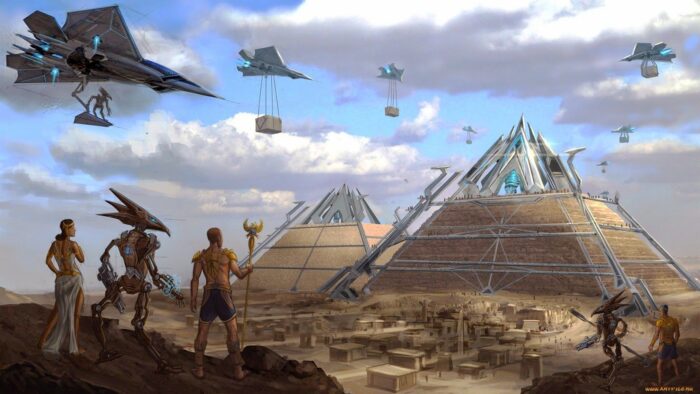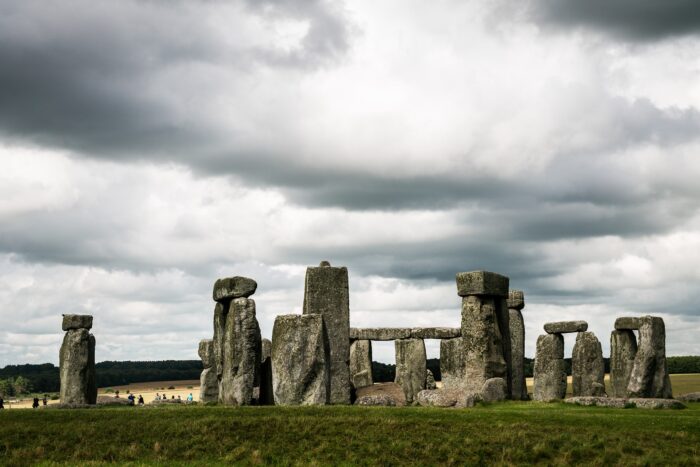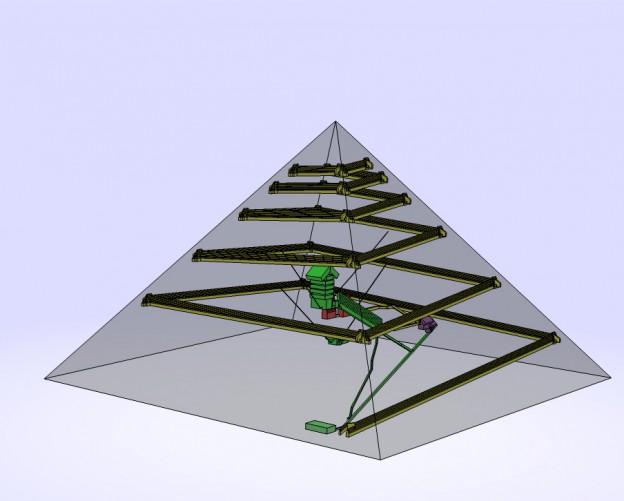The Pyramids at Giza (and some camels)
No, the aliens didn’t actually try to speak for the pyramids in a standard sense, but I’m sure this wasn’t your only experience with the numerous mysteries surrounding The Great Pyramids at Giza. It’s no surprise that the pyramids attract many outrageous conspiracy theories; I think we all agree that neither Noah nor the Illuminati built them.
If we critically analyze some modern ideas about how the Egyptian pyramids were built, we begin to see how the aliens could speak for them. This notion reveals some racial and cultural implications relating to the control of single-story narratives. Who has the right to speak for this monument anyways?
Aliens built the pyramids obv
One of the most infamous theories we have today to explain the ancient Egyptian pyramids is extraterrestrial life. Why did this notion gain so much traction?

The Egyptians couldn’t have built those pyramids themselves.
The basic concept of aliens constructing the pyramids fits the Eurocentric narrative and is driven by racial biases. This theory suggests that the primitive Egyptians (a non-white culture) were incapable of such advanced artistic, scientific, and architectural accomplishments. As a result, it would have been impossible for them to plan and execute an initiative to build the pyramids alone.
Instead, it is somehow more palatable for Westerners to believe that unproven alien life forms constructed the pyramids compared to other theories with merit. However, it’s important to say that this theory caters to a narrow demographic of conspiracy theorists. Check out this hour and a half long documentary on UFOTV if you’re not convinced!
Control of the story is out of this world!
This alien construction impulse reveals the desire to take the monument away from the modern Egyptians. In a way, this ensures that the control of the narrative is essentially off the planet, instead of in the hands of Egypt and Africa.

There’s a pattern that begins to emerge as we look at other noteworthy structures from ancient times. When we consider non-white ancient civilizations’ feats, such as Machu Picchu in Peru, the alien narrative appears again. There’s even a television series, Ancient Aliens, on the History Channel that reduces many non-white engineering accomplishments (including the Pyramids) to being built by extraterrestrial life. The alien theories are an active dismissal of such civilizations’ intelligence that is racially charged.

We don’t see this as much with the British.
Consider the ancient Stonehenge monument in the United Kingdom. This is an amazing engineering feat credited to another prehistoric civilization. However, the results from a survey I administered to Colgate students highlights how much more prevalent the association between aliens and the pyramids is compared to the association of aliens with Stonehenge.
A radical idea from an outsider: The Internal Ramp.
How could that work?
This novel idea bridges inconsistencies from other theories while using similar foundational principles: the use of a ramp. In essence, this theory explains that the Egyptians built an external ramp during the bottom third of construction. Eventually, they shifted gears and started building a ramp inside the pyramid. Some essential evidence supporting this claim is hollow spots in the results of an earlier French microgravimetry study.
Why was this notion dismissed?
This new idea was proposed by the French architect, Jean-Pierre Houdin. With no prior archaeology or Egyptology experience, he was essentially viewed as an outsider. However, he dedicated years to this research in Egypt, but his theory continued to be controversial for the wrong reasons.
After Houdin proposed his theory, Egypt’s chief archaeologist was not completely receptive to the notion. Perhaps this rejection was because Egypt experienced French invasion, occupation, and violence in the late 18th and early 19th centuries, a period known as the French Expedition to Egypt. Maybe the modern Egyptians want to safeguard this story for themselves. In doing so, they preserve their own rich history and culture but prevent outsiders from developing realistic explanations for the pyramids.
The danger of a single story.
Perhaps the alien and internal ramp tales have elements that fall into a “single-story” narrative. A single-story isn’t necessarily bad, but it can be fueled by race and limit the information available to its audiences at the expense of important cultural information. However, the essence of single stories is control.
We see that modern Egypt preferred to recognize outdated theories by rejecting an outsider’s viable explanation. These actions protect their nationalistic control of the single-story they prefer. On the other hand, Westerners create their narrative about the pyramids due to the dismissal of ancient non-white success. As a result, there is complete non-control of this single-story for every state.
Shane Knopp Author Shane is from Palm Beach, Florida and a member of Colgate University's class of 2023. He is concentrating in Computer Science with minors in Geology and Economics. He is currently part of the Student Government Cabinet and President of the Colgate Activities Board. Feel free to check out his other work from Legacies of the Ancient World last semester!

